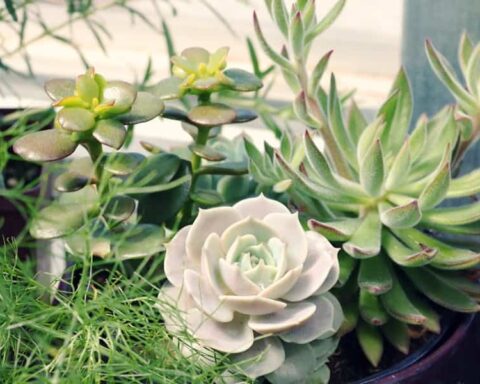Pest control is a crucial aspect of gardening, and finding natural and effective solutions is a top priority for many gardeners. Among the various options available, marigolds have gained popularity as an organic pest control method. These vibrant flowers not only add beauty to gardens but also possess natural compounds that repel pests. However, not all marigolds are equally effective for pest control. In this article, we will delve into the world of marigolds and explore which varieties are best suited for combating pests, providing valuable insights for gardeners seeking eco-friendly pest management solutions.
Which Marigolds Are Best For Pest Control?
French marigolds (Tagetes patula) are considered to be the best marigold variety for pest control. They release a strong scent that repels a wide range of garden pests, including aphids, nematodes, and whiteflies. Their compact size makes them suitable for borders and container gardening. Additionally, French marigolds attract beneficial insects that prey on pests, further enhancing their pest control capabilities.
Understanding Marigolds And Pest Control
Marigolds have long been recognized as effective natural pest control options in gardens. These vibrant flowers not only add beauty to the landscape but also possess unique properties that repel pests. To understand their pest control capabilities, it is essential to delve into the science behind marigolds and their interaction with pests.
Marigolds contain chemical compounds, such as thiophenes, limonene, and alpha-terthienyl, which give them their characteristic scent. This scent acts as a natural deterrent for many garden pests. When planted strategically among other crops, marigolds emit these compounds into the air, creating an invisible barrier that repels pests and helps protect neighboring plants.
Compared to chemical pesticides, marigolds offer several benefits as a pest control method. They are environmentally friendly, as they do not introduce harmful chemicals into the ecosystem. Marigolds are also cost-effective, as they can be easily grown from seeds and require minimal maintenance. Additionally, using marigolds for pest control reduces the risk of chemical residues on crops, making them a safer choice for consumption.
Furthermore, marigolds serve as companion plants, attracting beneficial insects like ladybugs, lacewings, and parasitic wasps. These insects feed on common garden pests, such as aphids, whiteflies, and spider mites. By incorporating marigolds into garden beds or surrounding vegetable patches with these flowers, gardeners can create a natural ecosystem that balances pest populations and minimizes the need for chemical interventions.
Different Marigold Varieties For Pest Control
- African Marigolds (Tagetes erecta): African marigolds are known for their large, vibrant flowers and strong scent. They release potent compounds that repel a wide range of pests, including nematodes, whiteflies, and aphids. Their tall stature makes them suitable for creating a barrier around garden beds, providing effective pest control.
- French Marigolds (Tagetes patula): French marigolds are the most popular variety for pest control. They release a strong scent that deters pests like aphids, nematodes, and whiteflies. French marigolds are low-growing and bushy, making them suitable for edging beds or interplanting with vegetables to ward off pests.
- Signet Marigolds (Tagetes tenuifolia): Signet marigolds have delicate, fern-like foliage and small, edible flowers. While they are primarily grown for culinary purposes, they also possess pest-repelling properties. Signet marigolds are effective against pests like aphids, spider mites, and thrips.
- Mexican Marigolds (Tagetes lucida): Mexican marigolds, also known as Mexican tarragon, have aromatic leaves and small, golden flowers. While they are less commonly used for pest control, they have been found to repel some garden pests, including aphids and whiteflies. Mexican marigolds are often utilized as companion plants in organic gardens.
- Calendula Marigolds (Calendula officinalis): Calendula marigolds, also known as pot marigolds, have bright, daisy-like flowers and are popular for their medicinal properties. While they are not as effective as other marigold varieties for pest control, they can still deter certain pests such as tomato hornworms, aphids, and cabbage worms.
Tips For Planting And Caring For French Marigolds
Selecting a Location: Choose a location that receives full sun for at least 6 hours a day. French marigolds thrive in
- Soil Preparation: Before planting, prepare the soil by removing any weeds or debris. Loosen the soil and amend it with organic matter, such as compost, to improve drainage and fertility. French marigolds prefer slightly acidic to neutral soil with a pH between 6.0 and 7.0.
- Planting: Plant French marigold seedlings or seeds after the last frost date in your area. Dig holes that are slightly larger than the root ball or seed size. Space the plants about 8 to 12 inches apart to allow for proper air circulation and growth. Gently firm the soil around the plants or seeds to ensure good contact.
- Watering: Water French marigolds consistently, keeping the soil evenly moist but not waterlogged. Avoid overwatering, as it can lead to root rot. Water at the base of the plants prevents wetting the foliage, which can increase the risk of diseases.
- Mulching: Apply a layer of organic mulch, such as straw or wood chips, around the base of the plants. Mulching helps retain soil moisture, suppresses weed growth, and regulates soil temperature.
- Fertilization: French marigolds are not heavy feeders but benefit from a light application of balanced fertilizer once or twice during the growing season. Follow the package instructions for the appropriate amount and frequency of application.
- Deadheading: Regularly remove faded or spent flowers, a process known as deadheading. Deadheading encourages continuous blooming and prevents the plants from redirecting energy to seed production.
- Pest and Disease Control: French marigolds are generally resistant to pests and diseases. However, keep an eye out for common issues like aphids, slugs, or fungal diseases. If necessary, use organic pest control methods or consult with a local gardening expert for appropriate solutions.
- Companion Planting: Take advantage of French marigolds’ pest-repelling properties by planting them alongside susceptible plants. They can help deter pests like aphids, nematodes, and whiteflies. Consider interplanting them with vegetables, herbs, or other flowers to create a natural pest control barrier.
- Winter Care: French marigolds are annual plants that do not survive frost. If you wish to save seeds or extend their flowering season, consider growing them in containers that can be brought indoors when temperatures drop.
Factors To Consider When Choosing Marigolds For Pest Control
- Climate and Growing Conditions: Consider the climate and growing conditions in your region.
- Specific Pest Problems: Identify the specific pests that are causing issues in your garden. Different marigold varieties may have varying degrees of effectiveness against certain pests. Research which marigold varieties are known to repel the pests you are targeting to make an informed choice.
- Aesthetics and Garden Design: Marigolds come in a range of colors, sizes, and growth habits. Consider the aesthetics of your garden and how marigolds will complement the overall design. Choose marigolds that align with your preferred color scheme and will enhance the visual appeal of your garden.
- Availability and Accessibility: Check the availability of marigold varieties in your local nurseries or garden centers. Some varieties may be more readily available than others. Additionally, consider the accessibility of seeds or seedlings for the chosen marigold variety, as it may impact your ability to plant and grow them effectively.
- Other Considerations: Companion Plants: Consider the compatibility of marigolds with other plants in your garden. Some plants may benefit from the presence of marigolds as companion plants, while others may be adversely affected.
- Growth Habits: Take into account the growth habits of marigold varieties, such as their height, spread, and overall form. This will help you determine their suitability for your garden beds or containers.
- Maintenance: Consider the level of maintenance required for different marigold varieties. Some may be more low-maintenance, while others may require more care and attention.
Final Words
Incorporating marigolds into your pest control strategy can be a game-changer for your garden. Whether you choose African, French, signet, or other marigold varieties, their natural pest-repelling properties and ability to attract beneficial insects make them a valuable asset. Consider your specific pest issues, growing conditions, and aesthetic preferences when selecting marigolds. With proper planting and care, marigolds can provide an eco-friendly and visually appealing solution to pest problems. Embrace the power of marigolds and enjoy a healthier, thriving garden free from unwanted pests.
FAQ’s
Can Marigolds Completely Eliminate All Pests In My Garden?
While marigolds have natural pest-repelling properties, they may not completely eliminate all pests in your garden. Their effectiveness can vary depending on the pest species and the specific marigold variety. It is recommended to use marigolds as part of an integrated pest management approach that combines various strategies for best results.
How Should I Plant Marigolds For Pest Control?
Plant marigolds strategically throughout your garden, focusing on areas where pest problems are most prevalent. Interplant them with susceptible crops or create a border around garden beds. Pay attention to spacing recommendations to allow for proper airflow and growth. Consider companion planting with other pest-repellent plants to enhance their effectiveness.
Do Marigolds Repel All Types Of Pests?
Marigolds have shown effectiveness against a range of pests, including aphids, nematodes, whiteflies, and certain types of beetles. However, their repellent properties may not work on all pests. It’s important to identify the specific pests causing issues in your garden and research which marigold varieties are known to be effective against them.
Can I Save Seeds From Marigolds For Future Plantings?
Yes, marigold seeds can be saved for future plantings. Allow the flowers to mature and dry on the plant. Once the flower heads have dried, remove them and collect the seeds. Store the seeds in a cool, dry place in airtight containers until you are ready to plant them in the next growing season.
Are There Any Precautions I Should Take When Using Marigolds For Pest Control?
Marigolds are generally safe to use in gardens and have a low risk of causing harm. However, as with any plant, some individuals may have allergic reactions. It is always recommended to wear gloves while handling plants and to wash hands thoroughly afterward. If you have concerns or specific allergies, consult with a healthcare professional or gardening expert.










